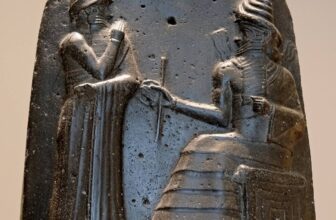Who is the Most Famous Art Forger in History
Art forgery has fascinated the world for centuries, but one name stands out above all others: Han van Meegeren. His ability to create paintings that fooled the most esteemed art critics and collectors cemented his place in history as one of the greatest forgers of all time. Van Meegeren’s forgeries, particularly those in the style of Johannes Vermeer, not only deceived experts but also led to one of the most dramatic trials in art history. His story is one of talent, deception, and ultimate redemption, woven through a narrative that continues to captivate art lovers and historians alike.
What Was Han van Meegeren Accused Of?
Han van Meegeren, a Dutch painter and art forger, was accused of selling a painting to the infamous Nazi leader Hermann Göring during World War II. The painting in question, “Christ and the Adulteress,” was believed to be an authentic Vermeer. After the war, the Dutch authorities arrested van Meegeren under the charge of treason, as selling a national treasure to the Nazis was a severe crime. The Dutch people, still reeling from the German occupation, viewed anyone who collaborated with the enemy as a traitor, and the idea that a Dutch masterwork had fallen into Nazi hands only intensified their outrage.
Faced with the possibility of severe punishment, including life imprisonment or even the death penalty, van Meegeren made an astonishing confession: the painting was not a Vermeer, but one of his own forgeries. This admission turned the trial into one of the most sensational legal and artistic scandals of the 20th century.
What Happened to Han van Meegeren?
After van Meegeren’s confession, experts examined his claims. Skeptical at first, the authorities required him to prove his abilities. While in custody, van Meegeren painted another “Vermeer”, a remarkable recreation of the old master’s style. This act of forgery, ironically, saved him from a treason conviction.
Instead of being sentenced as a traitor, van Meegeren was found guilty of forgery and fraud. In November 1947, he was sentenced to one year in prison, a relatively light punishment considering the gravity of his initial charges. However, before he could serve his sentence, he suffered a heart attack and died on December 30, 1947, at the age of 58. His death occurred before he could begin his prison term, effectively making him a free man at the time of his passing.
Why Did Van Meegeren Finally Admit to the Forgery?
Van Meegeren’s decision to confess to forgery was driven by the need to avoid the much more severe charge of treason. If convicted of selling a Dutch national treasure to the Nazis, he could have faced dire consequences. By proving that the painting was a fake, he transformed his image from that of a traitor to something almost resembling a folk hero, an underdog who outwitted the elitist art world.
His forgeries had initially been created as a form of revenge against critics who had dismissed his original artwork. Van Meegeren had once aspired to be a respected painter, but after receiving harsh criticism, he decided to use his talents to deceive the very art world that had rejected him. His success in fooling experts validated his skill, albeit in a morally questionable manner.
Even after his death, van Meegeren’s legacy lives on, serving as a cautionary tale about the art world’s vulnerabilities and the complexities of authenticity. His forgeries are now valuable in their own right, collected as historical artifacts rather than genuine Vermeers. His story is a testament to the blurred line between art and deception and how a single individual managed to rewrite art history, if only for a brief moment.




